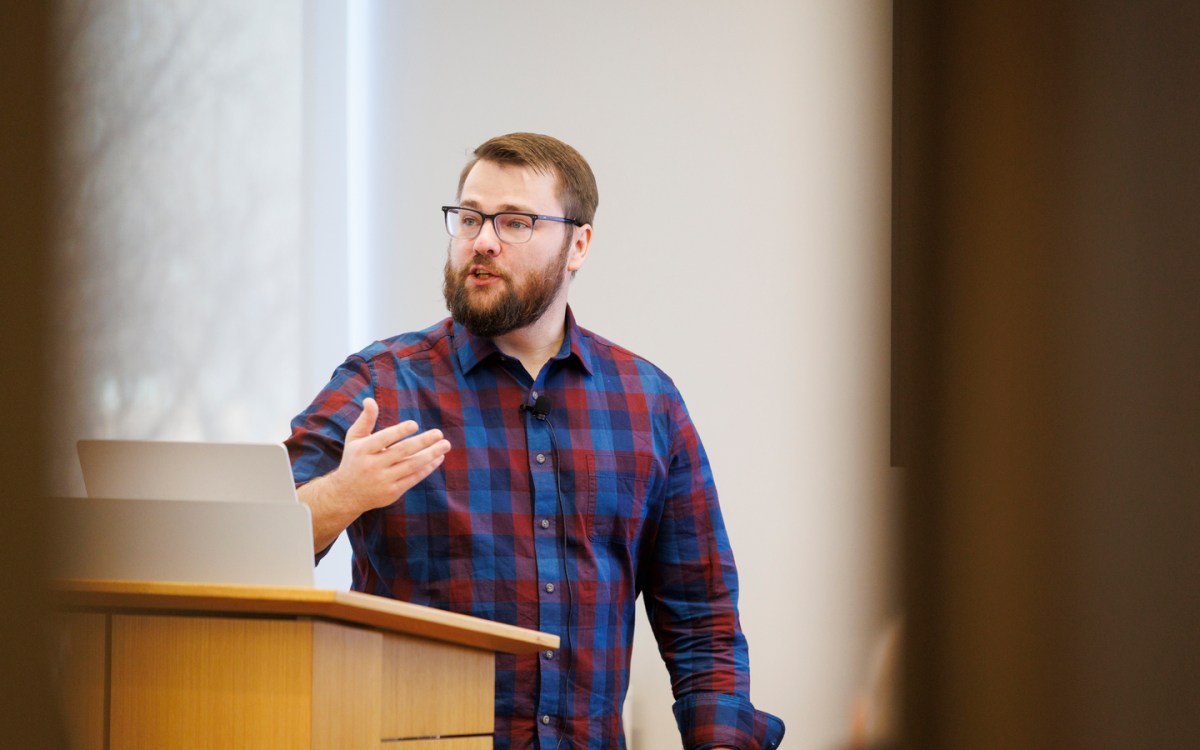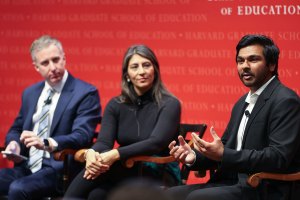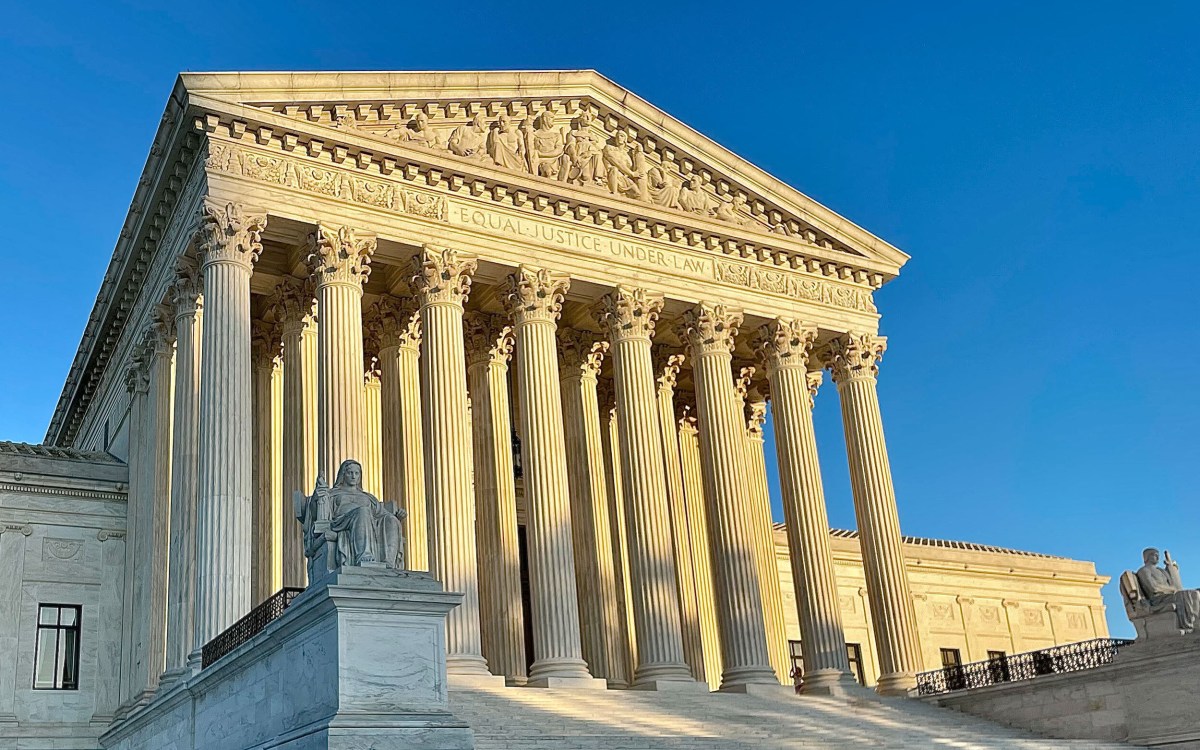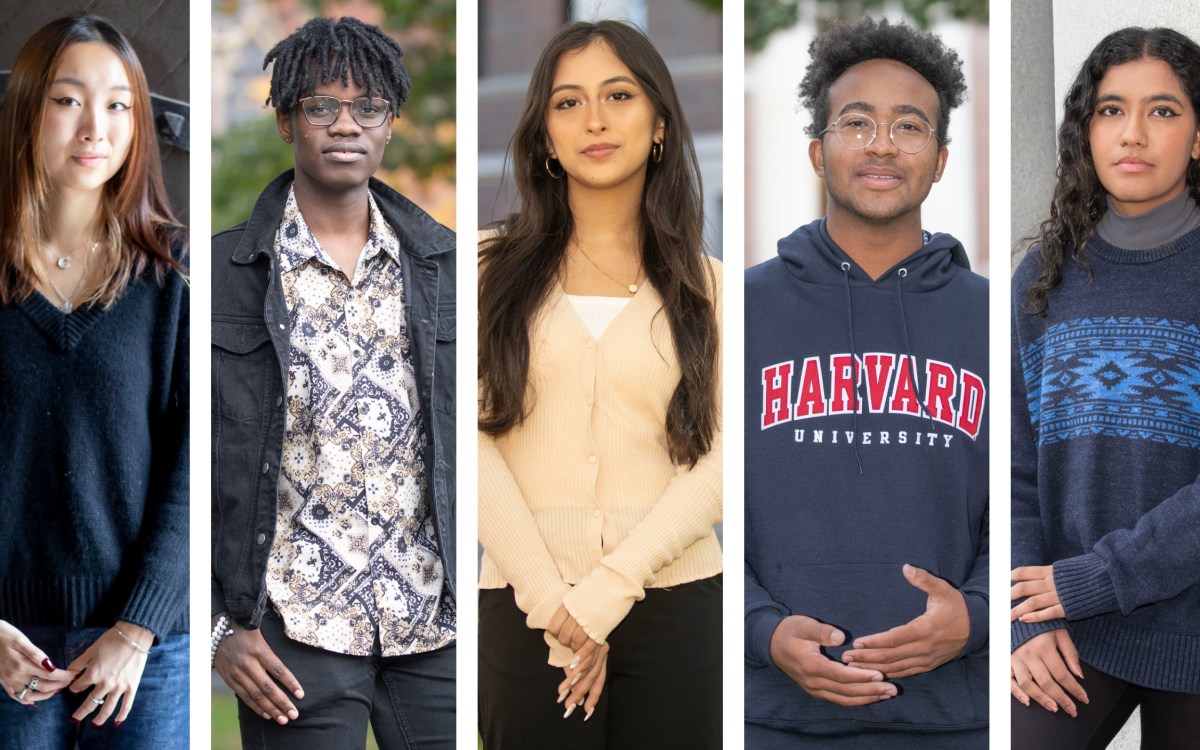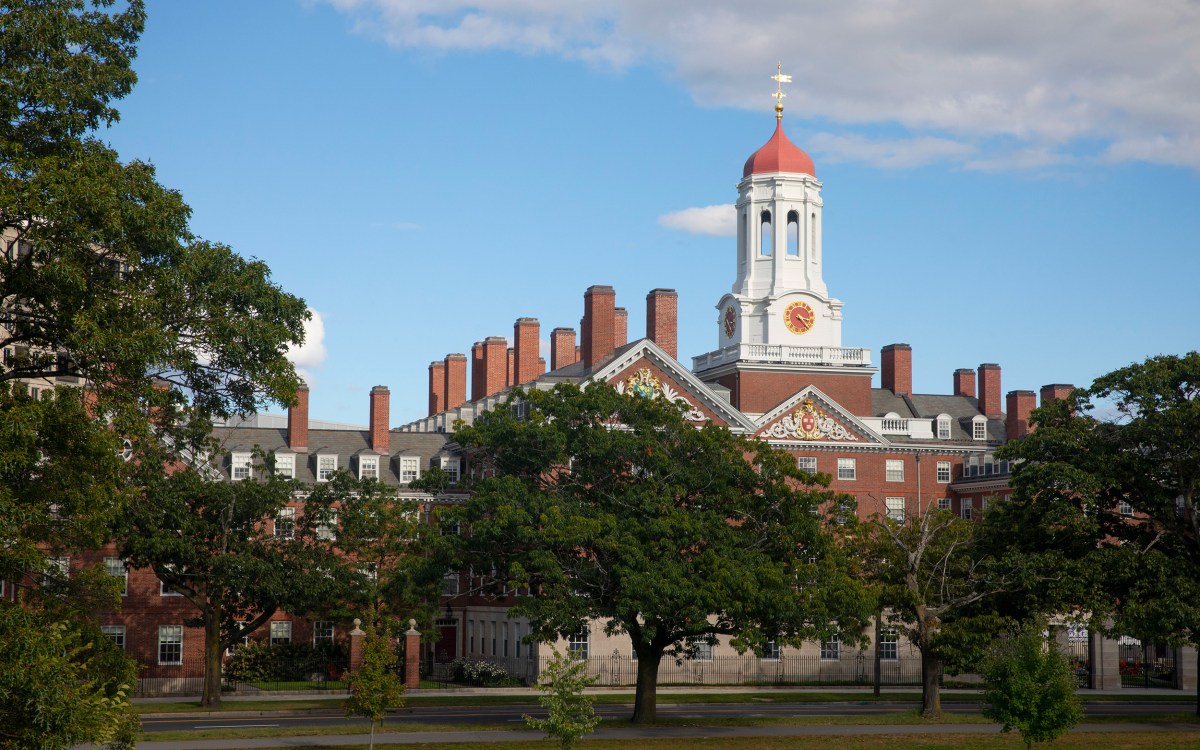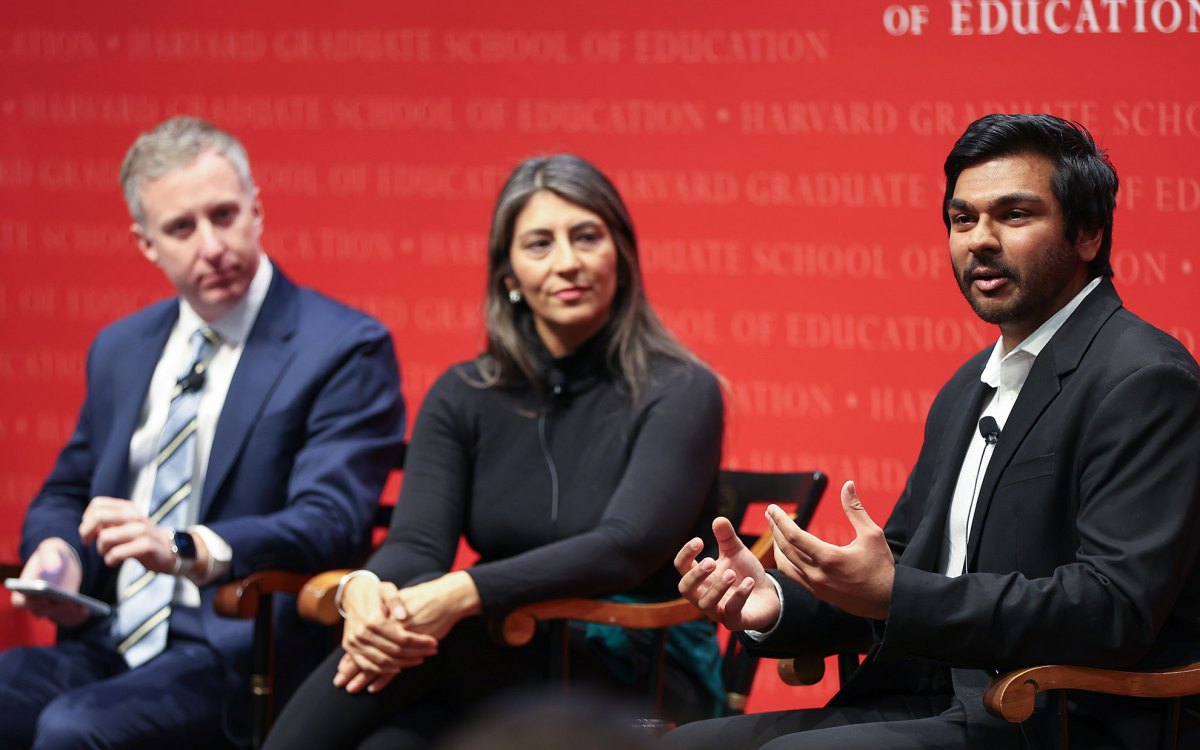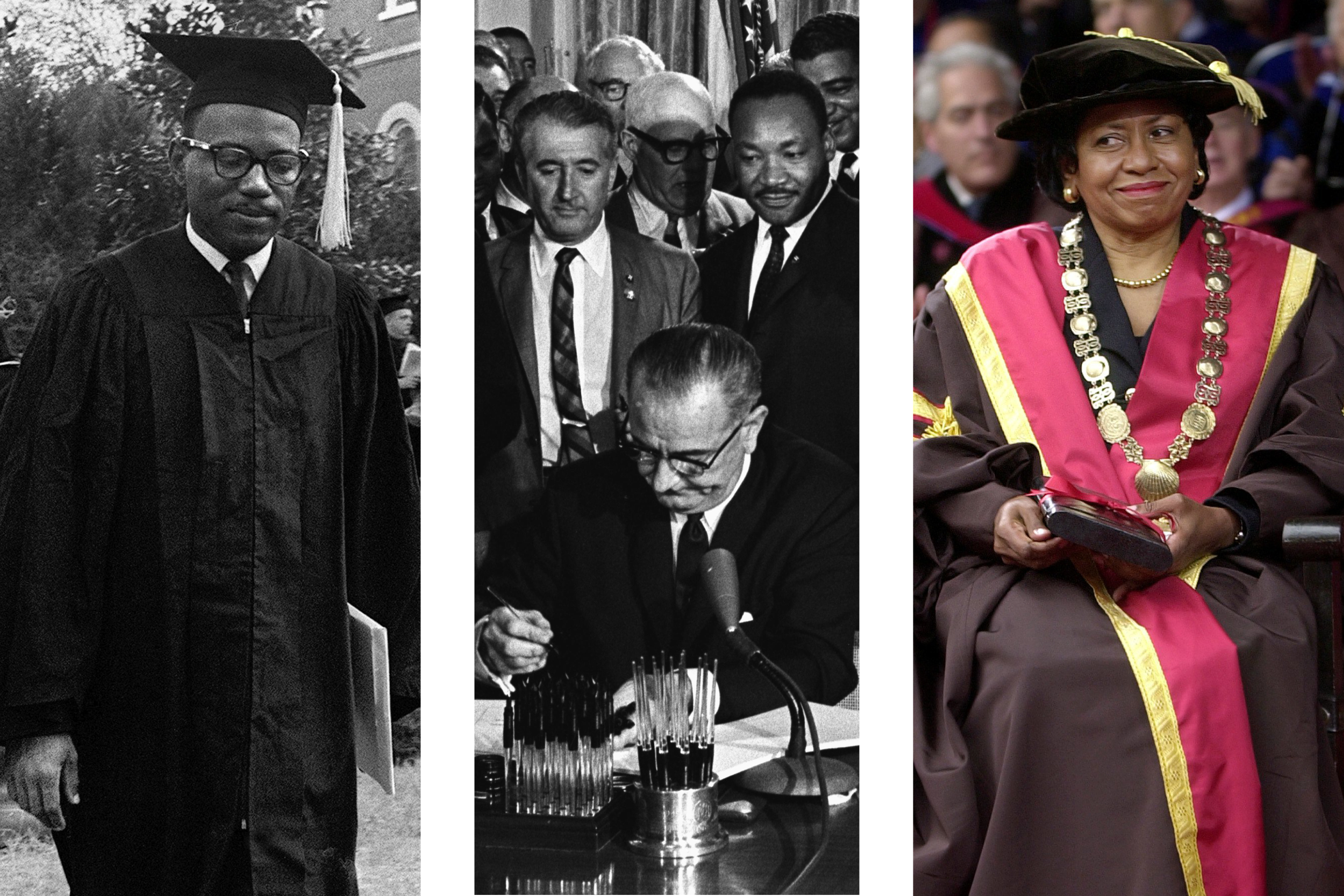
In 1962, James Meredith’s enrollment as the first Black student at the University of Mississippi sparked riots. In 1964, President Lyndon B. Johnson signed the Civil Rights Act as Martin Luther King Jr. and others looked on. In 2001, Ruth J. Simmons became the Ivy League’s first Black president.
Photos by AP and Cecil Stoughton/White House Press Office
Unfinished business
Education has been a force for racial progress in the U.S., but we still have a long way to go
Editor’s note: On Thursday, June 29, 2023, the Supreme Court ruled against race-conscious admissions policies at Harvard and the University of North Carolina, upending decades of precedent. Below, a look at the stakes in the case and more detail on how it ended up before the Court.
Education, with its power to transform lives, has long been a focal point in America’s struggle to address racial discrimination and cultivate a pluralistic democracy.
The Supreme Court has for more than four decades upheld policies like those used at Harvard, which consider race as one factor among many in admissions, and has recognized that schools have a compelling interest in achieving the benefits associated with a diverse student body. These benefits endure long after graduation: Students depart campus with the ability to mediate across differences and work and live with people of all backgrounds.
But the journey is not over. This timeline shows how far we’ve come in breaking down racial barriers across American society, and how far we still have to go — critical context for understanding what’s at stake as Harvard defends diversity at the Supreme Court.
1868
The 14th Amendment provides “all citizens with equal protection under the laws,” barring states from enacting and enforcing laws that subordinate certain people based on race.

1896
Plessy v. Ferguson upholds a state law allowing for “separate but equal” accommodations, allowing systemic racial segregation.


Linda Brown Smith, 1952.
AP
1954
The Supreme Court rules unanimously in Brown vs. Board of Education of Topeka that segregating public schools solely on the basis of race is unconstitutional, overturning Plessy v. Ferguson. The decision asserts that state-sponsored racial segregation in public education violates the Equal Protection Clause of the 14th Amendment.

1962
James Meredith’s enrollment at the University of Mississippi is met with white mob violence, prompting President John Kennedy to send federal troops.

1964
The Civil Rights Act of 1964 prohibits discrimination on the basis of race in employment, public accommodations, and programs that receive federal funds, including schools.

1978
Supreme Court rules in Regents of the University of California v. Bakke that considering race as one factor among many in admissions does not violate the Constitution’s Equal Protection Clause. Justice Lewis F. Powell Jr., author of the plurality opinion in Bakke, cites Harvard’s admissions practices as a model.

1987
Clifton Wharton Jr., ’47, as head of TIAA-CREF, becomes first Black CEO of a Fortune 500 company.


Los Angeles police confront UCLA students protesting ballot Proposition 209.
AP
1996
California voters approve Proposition 209, which requires the state’s public colleges and universities to stop considering race during admissions. In June 2020, the UC Board of Regents votes unanimously to repeal the ban, noting the number of Hispanic and Black students enrolled in the system has “not kept pace” with the diversity of California’s K-12 schools or general population.

2001
Ruth Simmons, Ph.D. ’73, named 18th president of Brown University. She is the first Black president of an Ivy League institution.

2003
Supreme Court reaffirms in Grutter v. Bollinger that universities and colleges may consider race as one factor among many to achieve the benefits of student body diversity. The Court holds that the University of Michigan Law School’s narrowly tailored use of race in admissions does not violate the Equal Protection Clause of the Constitution.

2005
To expand College access, students whose family income is $40,000 or less per year no longer pay tuition under the new Harvard Financial Aid Initiative. Those with family incomes between $40,000 and $60,000 per year contribute a modest, fixed amount. Starting in 2022, students with family incomes of $75,000 or less have no cost for tuition, room, board, or fees under the initiative.

2014
Anti-affirmative action activist Edward Blum forms Students for Fair Admissions Inc., which files a lawsuit in federal court alleging Harvard’s admission policies and practices do not comply with Grutter and that they discriminate against Asian Americans. SFFA also sues the University of North Carolina (2014), alleging it also discriminates by taking race into account as one factor among many in its admission practices.

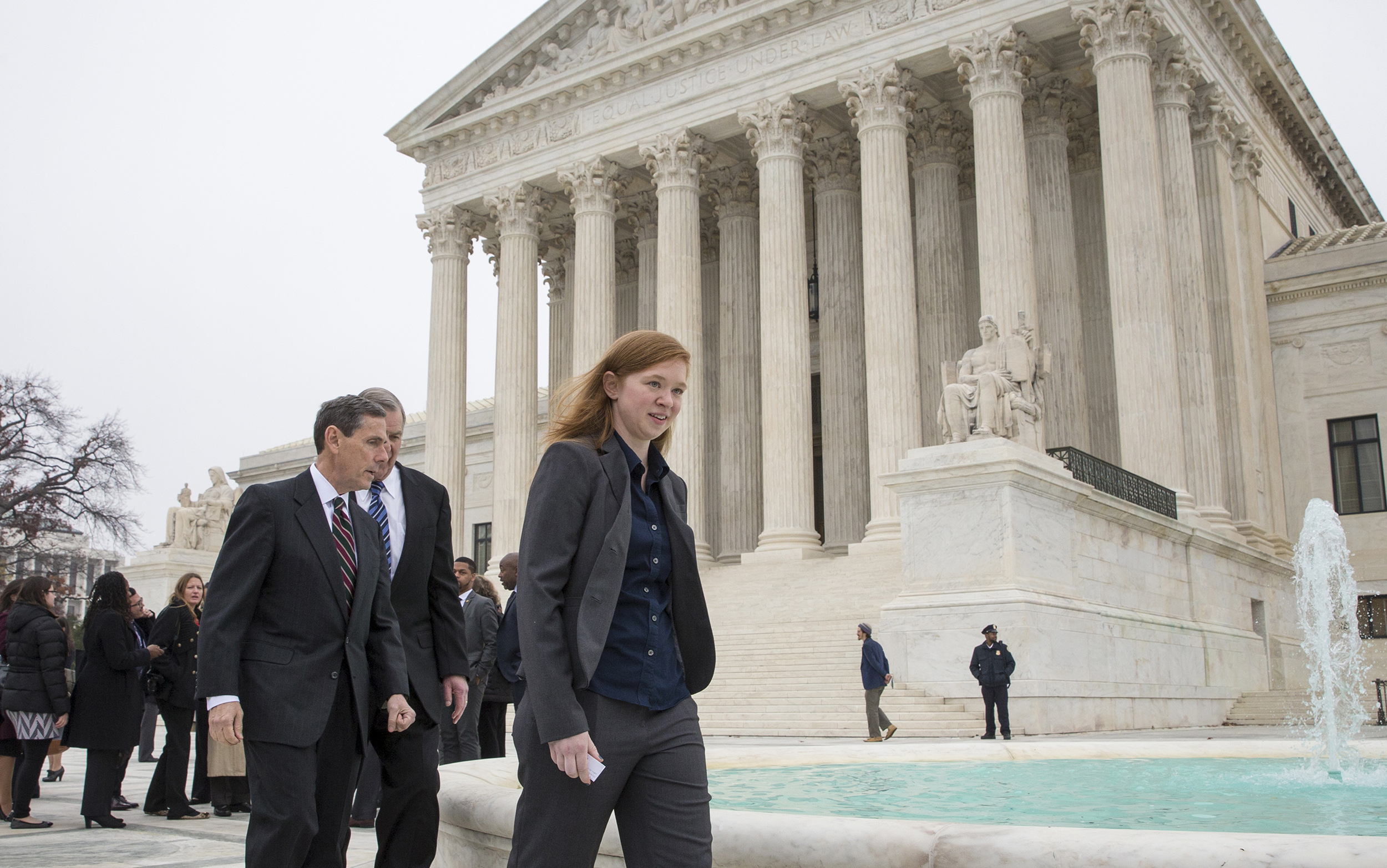
Abigail Fisher and Edward Blum outside the Supreme Court.
AP
2016
Supreme Court reaffirms in Fisher v. University of Texas at Austin that universities have a compelling interest in the educational benefits that come from a diverse student body, and upholds UT’s race-conscious admissions policy.

2017
Black students make up only 9 percent of first-years at Ivy League schools, but 15 percent of college-age Americans, roughly the same gap as in 1980.

2019
Following a three-week trial, the U.S. District Court for the District of Massachusetts rejects each of SFFA’s claims in its lawsuit against Harvard. The court determines that, consistent with Supreme Court precedent, Harvard uses race only as one factor among many, does not engage in racial balancing or maintain racial quotas, and does not discriminate against Asian Americans. The court also rules that Harvard does not have a workable race-neutral alternative. SFFA appeals the ruling to the U.S. Court of Appeals for the First Circuit.

2020
The U.S. Court of Appeals upholds the decision of the district court in Harvard’s favor.
A survey of 1,160 public and private institutions, including Harvard, by the College and University Professional Association for Human Resources finds that more than 80 percent of top administrators are white. In fall 2020, whites make up 74 percent of full-time faculty at colleges and universities, according to the National Center for Education Statistics. Asian/Pacific Islanders and Blacks are just 7 percent each; Hispanics make up 6 percent. Less than 1 percent are Native American/Alaska Native people or those who identify with two or more races.
The share of Black officers in the U.S. military is 9 percent, up from 1.6 percent at the start of the Vietnam War, but still a significant drop-off in representation compared with overall enlistments.

2021
Six CEOS on the Fortune 500 list are Black, 1 percent of the total.

2021-2022
SFFA files a cert petition, asking the Supreme Court to outlaw the use of race in admissions.
Of 100 U.S. senators, three are African American, seven are Hispanic Americans, and two are Asian American or Pacific Islander American. The rest are white. Forty-seven of the nation’s 50 governors are white.

2022
An analysis led by an assistant professor at Harvard Medical School reveals that diversity in U.S. academic medicine has not kept pace with the nation’s broader population changes. In particular, as of 2020, Black men make up just 3 percent of physicians in the country.
The Supreme Court agrees to hear SFFA’s petition in the cases against Harvard and the University of North Carolina at Chapel Hill. Oral arguments are scheduled for Oct. 31.

2023
On June 29, the Supreme Court ruled against race-conscious admissions policies at Harvard and the University of North Carolina, upending decades of precedent. “We write today to reaffirm the fundamental principle that deep and transformative teaching, learning, and research depend upon a community comprising people of many backgrounds, perspectives, and lived experiences,” Harvard leaders in a statement. “That principle is as true and important today as it was yesterday. So too are the abiding values that have enabled us — and every great educational institution — to pursue the high calling of educating creative thinkers and bold leaders, of deepening human knowledge, and of promoting progress, justice, and human flourishing.”
